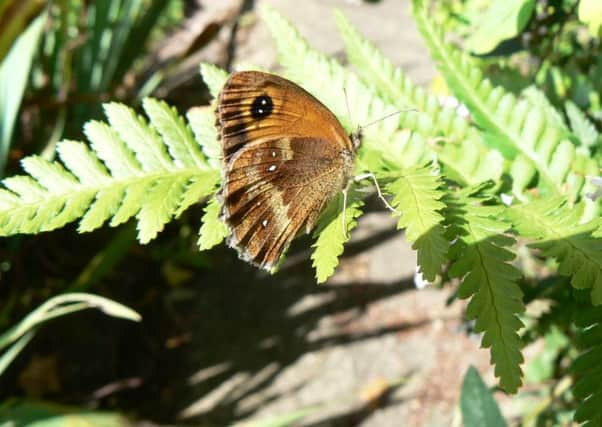Mystery over '˜disastrous' summer for butterflies


Despite settled, dry weather which normally would enable the insects to thrive, some species were reduced by almost half this year.
The figures from the Big Butterfly Count survey make shocking reading, with many common varieties seemingly in freefall. Some recorded their worst statistics since the count began.
Advertisement
Hide AdAdvertisement
Hide AdThe gatekeeper, comma and small copper species all had their worst summers since the project started, recording falls of 40, 46 and 30 per cent respectively.
The small tortoiseshell dropped by 47 per cent and the recognisable peacock butterfly by 42 per cent.
The average butterfly spotter taking part in the survey would have seen three peacocks during 2013, but would have onyl a 50:50 chance of seeing one three years later.
Participants also saw the lowest number of butterflies per count since the scheme began with an average of just 12 butterflies spotted.
Advertisement
Hide AdAdvertisement
Hide AdThese figures were even lower than those experienced during the cold and wet summer of 2012 – the worst year on record for UK butterflies.
Reasons why butterflies have struggled despite favourable summer weather are as yet unclear.
The charity’s head of recording Richard Fox said:
“The drop in butterfly numbers this summer has been a shock and is a bit of a mystery. When we have cold, wet summers, as in 2012, we expect butterfly populations to plummet, but that wasn’t the case this year.
“The summer months were warmer than usual, yet most Big Butterfly Count participants saw fewer butterflies. Perhaps the very mild winter had a negative effect, or the cold spring, or perhaps the impacts of intensive farming and pesticides are really hitting these common species now.
Advertisement
Hide AdAdvertisement
Hide Ad“The importance of Big Butterfly Count is that it takes place every year over a long period; the longer it goes on the more we can learn about the causes that are driving the declines and in some cases, increases of our beautiful butterfly species. We are really grateful to the many thousands of people across the UK who do their bit to help butterflies by taking part in the Big Butterfly Count each summer.”
The Red Admiral and Green-veined White bucked the negative trend to experience good years. The Red Admiral was up 70 per cent compared to 2015, had the largest year-on year-increase of any species and achieved its second highest abundance since the Count began.
The Green-veined White was up by 58 per cent compared to last year and was the only one of the common white butterfly species to experience a substantial rise in numbers.
More than 36,000 people took part in this year’s Count, spotting around 390,000 butterflies during the three-week mid-summer recording period.
The Big Butterfly Count helps Butterfly Conservation find out how the UK’s common species are faring and how to best protect them in the future. It is sponsored by both Waitrose and John Lewis.